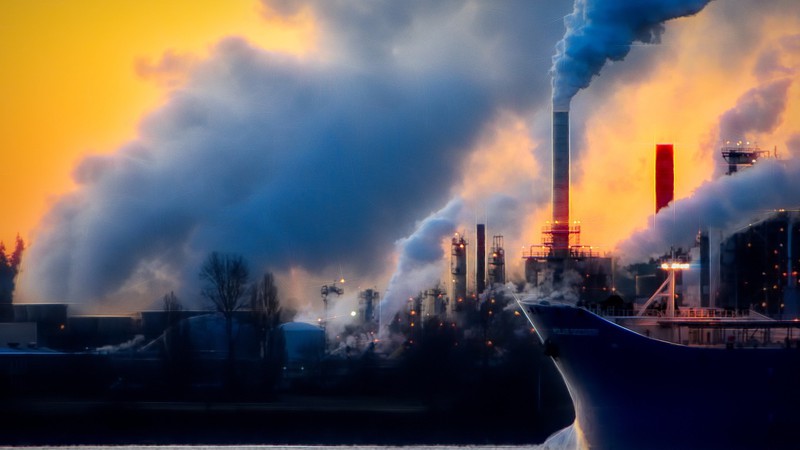Wondering how oil, coal, and natural gas cause climate change? Here's a quick primer.

Fossil fuel gasses released into the atmosphere trap heat that reflects back to the surface. Chris LeBoutillier / Pixabay Pixabay License
According to the National Oceanic and Atmospheric Administration (NOAA), carbon dioxide is the most important greenhouse gas, that is, gas that traps heat rising from the planet’s surface and sends that heat (at least some of it) back down to Earth.
In fact, carbon dioxide serves an essential function. Without its heat-trapping properties temperatures on Earth would rarely rise above the freezing point, making the planet largely uninhabitable. A certain amount of global warming is good and necessary.
But there is definitely such a thing as too much of a good thing.
Various natural processes, such as plant photosynthesis—in which plants absorb carbon dioxide and convert it to glucose—remove CO2 from the atmosphere. In the United States, forests vacuum up about 13 percent of all carbon dioxide. Oceans are also a carbon “sink,” the term for entities that absorb more carbon dioxide than they emit.
The problem is that carbon sinks work very slowly and their functions cannot be speeded up. The planet moves at its own pace. Human beings, on the other hand, have been cranking out so much carbon dioxide so fast that the planet’s natural carbon sinks can’t swallow it up quickly enough. As a result, there’s too much carbon dioxide in the atmosphere, trapping excessive amounts of heat. And when that heat is radiated back to the surface the result is global warming—and climate change.
How are human beings generating this excessive amount of carbon dioxide? By burning fossil fuels. Since the start of the industrial revolution more than 200 years ago, the volume of carbon dioxide in the atmosphere has spiked by 50 percent. In just the past 60 years, levels of carbon dioxide in the atmosphere have increased at triple the rate of natural increases throughout history. The end of the most recent ice age, about 11,000 years ago, saw a dramatic increase in carbon dioxide—but nothing like the jump seen over the past six decades, according to the NOAA.
A report to the United Nations authored by a consortium of 270 climate researchers from 67 countries, published in February 2022, offered an especially alarming assessment of the planet’s future if the world’s nations fail to slow down the rapid rise in atmospheric carbon dioxide and with it, global warming.
“The cumulative scientific evidence is unequivocal,” one of those researchers, Maarten van Aalst of Red Cross Red Crescent Climate Centre in the Netherlands, told the science journal Nature. “Any further delay in global action on adaptation and mitigation will miss a brief and rapidly closing window of opportunity to secure a liveable and sustainable future for all.”
Long form articles which explain how something works, or provide context or background information about a current issue or topic.